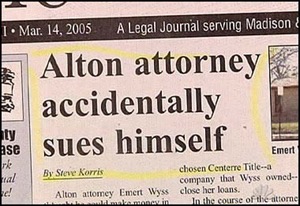The Bent-Northrop Memorial Library of Fairfield, Vermont, will debut a three-person statewide art tour on Monday at 6 p.m. after the library has closed. The Brain-to-Brain Art Download Tour has additional stops planned at other libraries around the state.
Three Franklin County artists will participate: musician Jeff Blouin of Neon Spoon, painter and iPhone photographer Paule Gingras of St. Albans, and writer and former CTV Anchor Bill Haugland of Highgate Springs. Each will have a new work available for brain-to-brain download.
The art is in the work. The science — and the show — come from the download.
Brain-to-brain interfaces have arrived for reading, music, or art. Thanks to researchers at UVM, it will soon be commercially possible to download a virtual story from the author’s brain, a painting from an artist, or a song from a musician. Don’t forget to leave an actual cash payment.
Here’s how it works. Multiple electrodes placed on the artist’s scalp record activity from the artist’s cerebral cortex and convert it into an electrical signal that is delivered via neural link to another set of electrodes on an exhibit visitor. The attendee’s brain processes the signal from the artist and — despite being unfamiliar with the work the artist has performed — gains total recall of the piece. And, thanks to a new smartphone app, the artist and viewer will soon be in different locations.
“This is mind-blowing,” UVM neuroscientist Bernard Schwartz said.
Dr. Schwartz and his colleagues built on an experiment led by Duke neuroscientist Miguel Nicolelis, a pioneer in the field of brain-machine interfaces. In that 2008 work, Dr. Nicolelis implanted a monkey with a new brain-computer interface. The monkey controlled a robot walking on a treadmill in Kyoto, Japan. The monkey watched the robot walking in sync with him by way of a display screen.
A new experiment reported this year showed brain to brain communication between rats, one in Natal, Brazil, and one at Duke in North Carolina using similar brain-computer interfaces. In that experiment, the “encoder” rat in Brazil learned to press a lever in its cage. The brain implant recorded activity from the rat’s motor cortex and converted it into an electrical signal delivered via neural link to the brain implant of a second “decoder” rat.
It was a simple step to human artists.
“Artists are in this respect easier to work with,” Dr. Schwartz said. “Because they can visualize an entire work at one time.”
Each artist will download just three times to “mind-melders” in the library gallery.
“Why not have ’em put together a medley of earworm songs!” Bent-Northrop’s Wendy Maquera asked. “I wonder which one would stick?” We went to my Interweb friends to work up a set list that included All the Single Ladies, Call Me Maybe, Jenny (867-5309), Old Time Rock and Roll, Pinball Wizard, Take a Letter, Maria, Tubthumping and Never Gonna Give You Up (with an over-saturated Spoony doing the video dance moves) plus George Thorogood’s Bad to the Bone and I Drink Alone, and a famed horror writer’s suggestion of Bach’s Concerto for Two Violins in D Minor or Tuvan throat-singing.
Mr. Blouin has worked out a new the Gregorian Chant that he “guarantees will plant an earworm.” His rendition of Celine Dion’s My Heart Will Go On includes the score and lyrics.
Ms. Gingras “shares the beauty people walk by and never notice” with her iPhone photos. Her piece for this show blends technology with her Franklin County landscape.
After It Rains, Mr. Haugland’s new book of short stories, is coming out in June. He will spin The Photograph for this show. “I’m intrigued that even a dinosaur with technology can simply think about a picture and put the entire story in someone’s head,” he said, “so I’m game.”
The rat study was published in Scientific Reports in January; Dr. Schwartz plans to publish later this year. Apple and Google have already expressed interest in the technology.
Tickets, schedules, and downloadable background materials are available at ticketmaster.allarts.org. Admission is FREE but you must have an advance reservation to participate. Proceeds will benefit local art projects in Franklin County, Vermont.

 I saw a t-shirt at the Seafood Festival yesterday.
I saw a t-shirt at the Seafood Festival yesterday. That was then.
That was then.
 “Citizens Insurance, or Citizens, is the popular name for government established, not-for-profit insurers in Florida and Louisiana,”
“Citizens Insurance, or Citizens, is the popular name for government established, not-for-profit insurers in Florida and Louisiana,”  I did check to see that Citizens had properly credited my premium check to the account, only to find they have bumped my rates to over FIVE THOUSAND DOLLARS per year. And put me on a “payment plan” in which my three grand check was merely the first installment. Good to have a government-run insurer helping us.
I did check to see that Citizens had properly credited my premium check to the account, only to find they have bumped my rates to over FIVE THOUSAND DOLLARS per year. And put me on a “payment plan” in which my three grand check was merely the first installment. Good to have a government-run insurer helping us. Tom Ripley owns my garbage route. I like Tom. He’s friendly, always on time, and comes right up on the porch to pick up the trash cans. He even (usually) latches the storm door when he puts the cans back. He owns a couple of used garbage trucks that he bought at the state auction and usually has a couple-three pickups that he runs around his route every Sunday before church. Sadly, he’s leaving the business because Vermont says he has to buy a new truck.
Tom Ripley owns my garbage route. I like Tom. He’s friendly, always on time, and comes right up on the porch to pick up the trash cans. He even (usually) latches the storm door when he puts the cans back. He owns a couple of used garbage trucks that he bought at the state auction and usually has a couple-three pickups that he runs around his route every Sunday before church. Sadly, he’s leaving the business because Vermont says he has to buy a new truck.